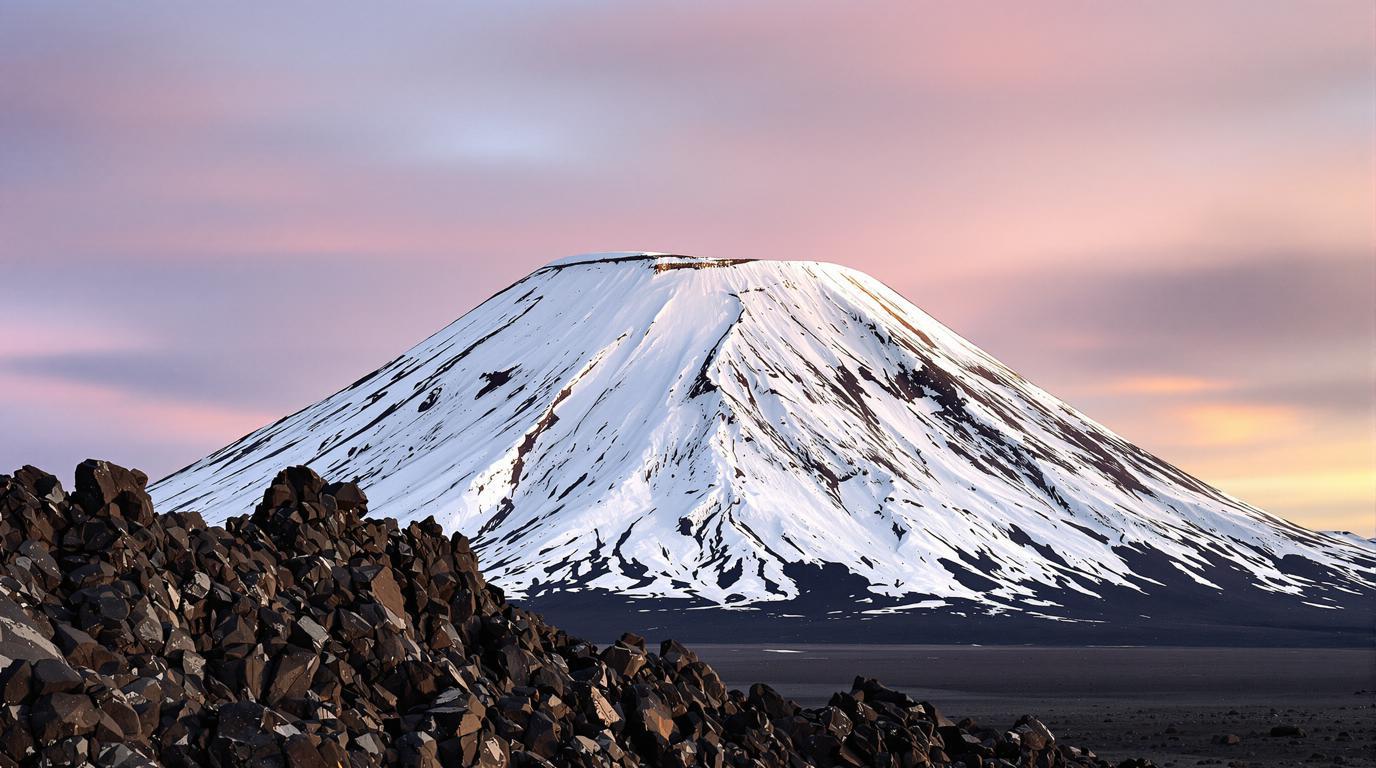Teide National Park transforms into a magical winter wonderland when snow blankets its volcanic landscapes. What many travelers don’t realize is that post-snowfall might be the most extraordinary time to explore these otherworldly hiking trails. The contrast between pristine white snow and black volcanic rock creates a photographer’s dream and a hiker’s paradise unlike anywhere else in Europe.
A volcanic giant dusted in white
Mount Teide, standing proudly at 12,198 feet (3,718 meters), is Spain’s highest peak and the third largest volcano in the world. When winter precipitation covers this sleeping giant with snow, it creates a surreal landscape that feels more like walking on another planet than a Spanish island. This phenomenon typically occurs between December and February, though flurries can surprise visitors into March.
The snow rarely lasts more than a few days at lower elevations, making this fleeting beauty all the more special for those lucky enough to witness it. As the white carpet begins to melt, it reveals fascinating patterns across the volcanic terrain, offering hikers a unique visual experience that combines winter magic with Mars-like geology.
Trail options for every adventurer
The park features over 30 marked trails of varying difficulty, many of which become even more spectacular after a snowfall. For beginners, the Roques de García loop trail (Trail No. 3) offers an accessible 3.5-kilometer route around some of the park’s most iconic rock formations, including the famous “God’s Finger” rock column.
“After the snow melts from the Roques de García, the remaining patches create these fascinating white islands floating in a sea of red and black volcanic rock,” explains Miguel Hernández, a local guide with 15 years of experience in the park.
More ambitious hikers can tackle Montaña Guajara, the park’s third-highest peak. This 8-kilometer trail rewards adventurers with panoramic views of Teide and the entire Las Cañadas caldera. During the post-snow period, the contrasting textures of snow-streaked slopes against the caldera’s ochre tones create a truly mesmerizing vista that rivals scenes from much more distant tropical destinations.
Summit adventures and permit planning
For the ultimate Teide experience, hiking to the summit provides unparalleled views across the Canary archipelago. Be aware that accessing the peak requires a free permit that must be secured well in advance. After snowfall, these permits become even more precious as the mountain’s appearance transforms dramatically.
The Telesforo Bravo trail (No. 10) leads from the upper cable car station to the summit crater. Though just 1.6 kilometers long, this trail climbs through challenging terrain that becomes even more complex with patches of snow and ice. The post-snow period offers a fascinating glimpse of the transformative power of high-altitude weather systems, similar to what trekkers experience in the Himalayas but accessible within Europe.
Practical considerations for post-snow hiking
Timing is everything when planning to experience Teide’s post-snow beauty. Monitor local weather forecasts carefully, as conditions can change rapidly. The ideal window typically opens 2-5 days after a snowfall, when paths become more accessible but snow still adorns the higher elevations.
“What makes post-snow hiking so special here is the microclimate transitions,” notes Dr. Elena Rodríguez, climatologist at the University of La Laguna. “You can experience winter at the summit and spring-like conditions just a thousand meters lower, all within a single hike.”
Proper equipment remains essential even after the main snowfall has passed. Waterproof hiking boots with good traction, layered clothing, sun protection, and plenty of water are non-negotiable. The combination of high altitude, intense UV radiation, and lingering snow patches demands proper preparation, not unlike preparing for the variable conditions encountered on Europe’s most stunning train journeys.
Beyond the hiking trails
Exploring Teide’s post-snow landscape extends beyond hiking. The park’s astronomical observatory offers nighttime stargazing experiences that are enhanced after snowfall, as the white ground reflects moonlight, illuminating the landscape in a soft glow. This creates a magical setting for photography enthusiasts seeking to capture the Milky Way above snow-touched volcanic cones.
The nearby village of Vilaflor, Spain’s highest settlement, provides a charming base for Teide explorations with its quaint historical architecture reminiscent of medieval European towns. Local restaurants serve traditional Canarian cuisine, perfect for refueling after a day on the trails.
For a complete island experience, consider visiting the coastal town of Garachico, where the stark contrast between Teide’s snowy heights and the Atlantic coastline highlights Tenerife’s incredible diversity. This picturesque harbor town features natural swimming pools formed by ancient lava flows and colorful buildings reminiscent of French coastal towns.
Teide’s post-snow hiking trails offer a rare convergence of seasonal beauty, volcanic wonder, and accessible adventure. In this fleeting window between winter’s touch and spring’s arrival, Tenerife reveals perhaps its most extraordinary face—one that relatively few travelers ever witness, but that no visitor ever forgets.
